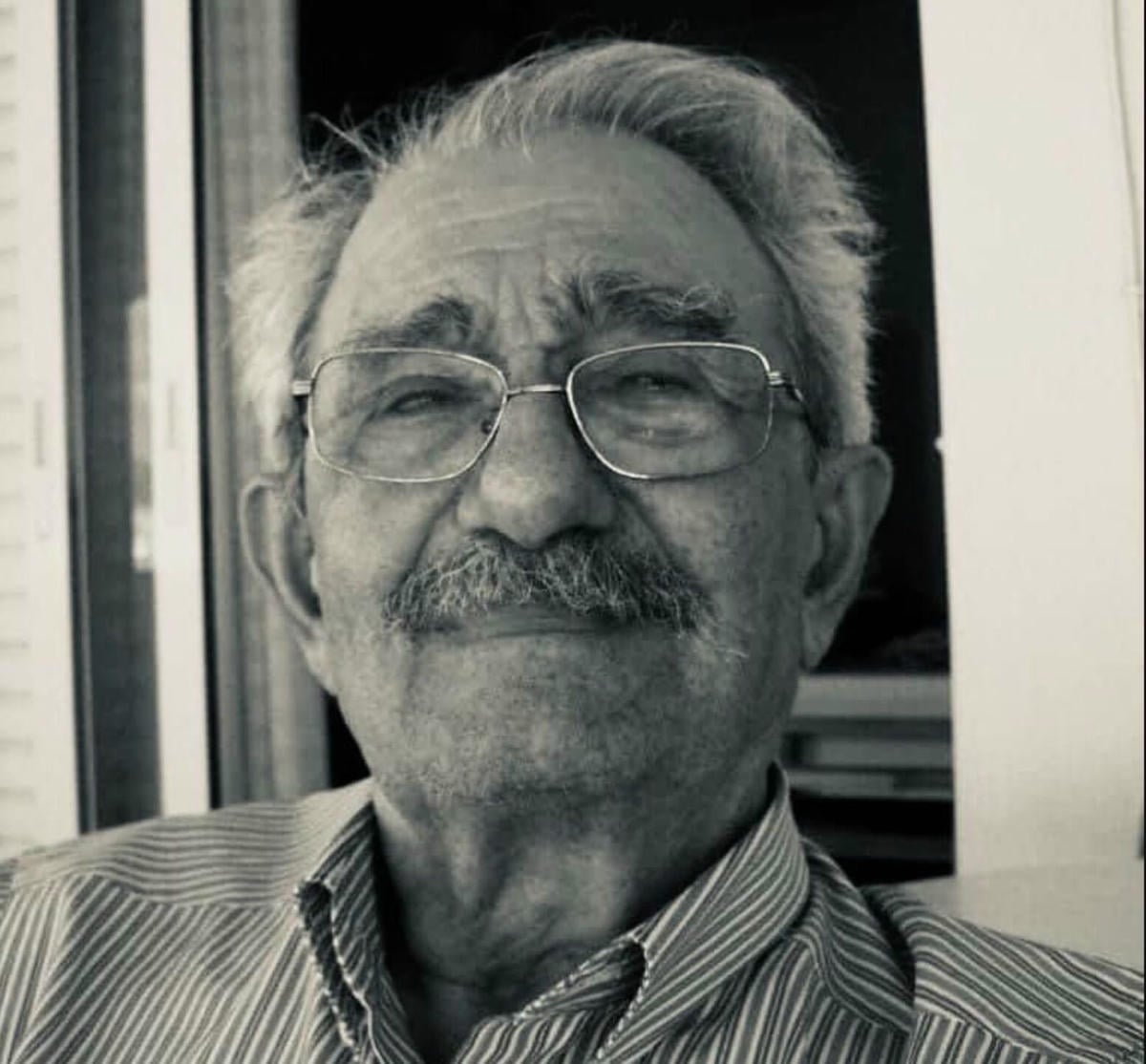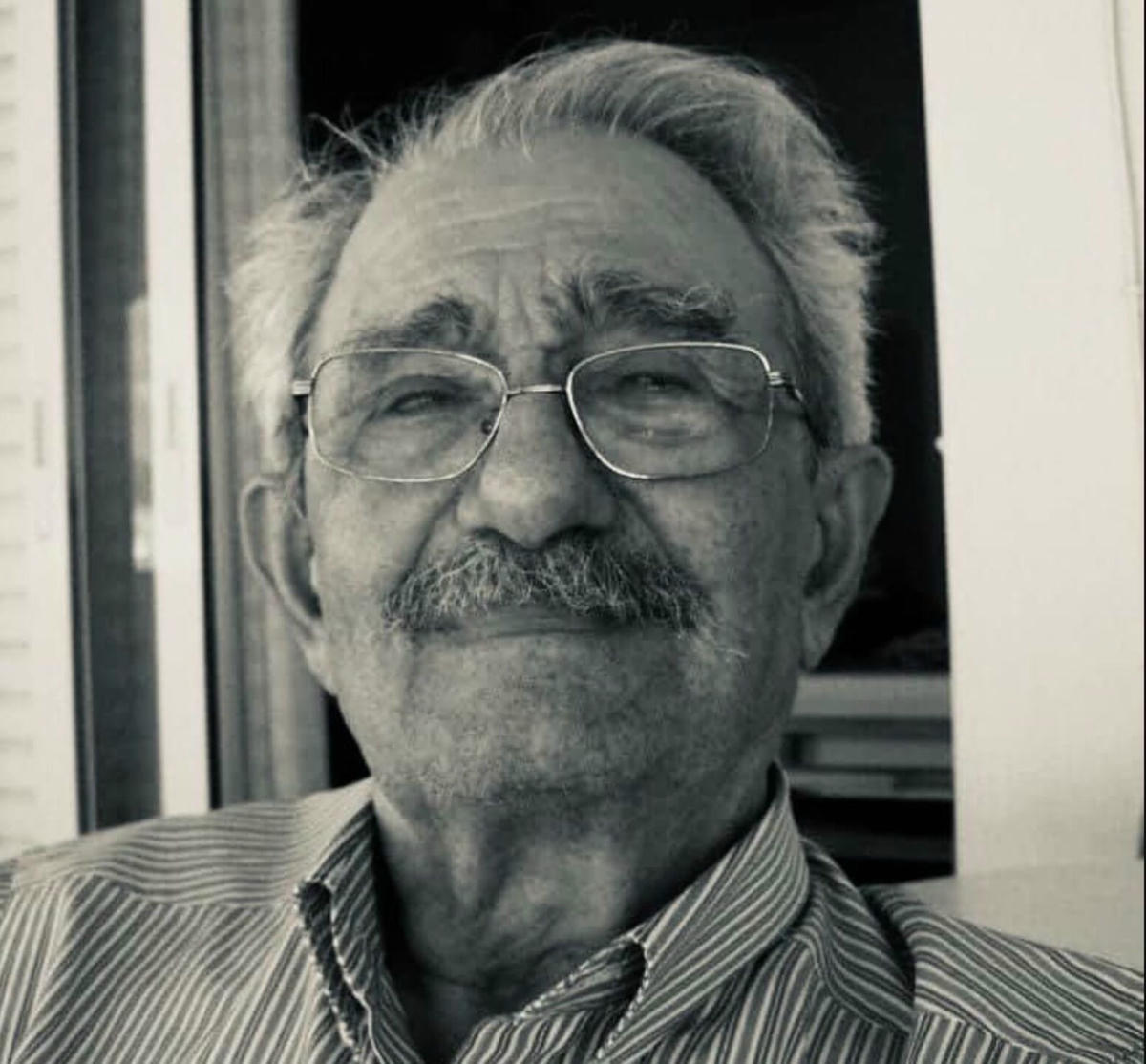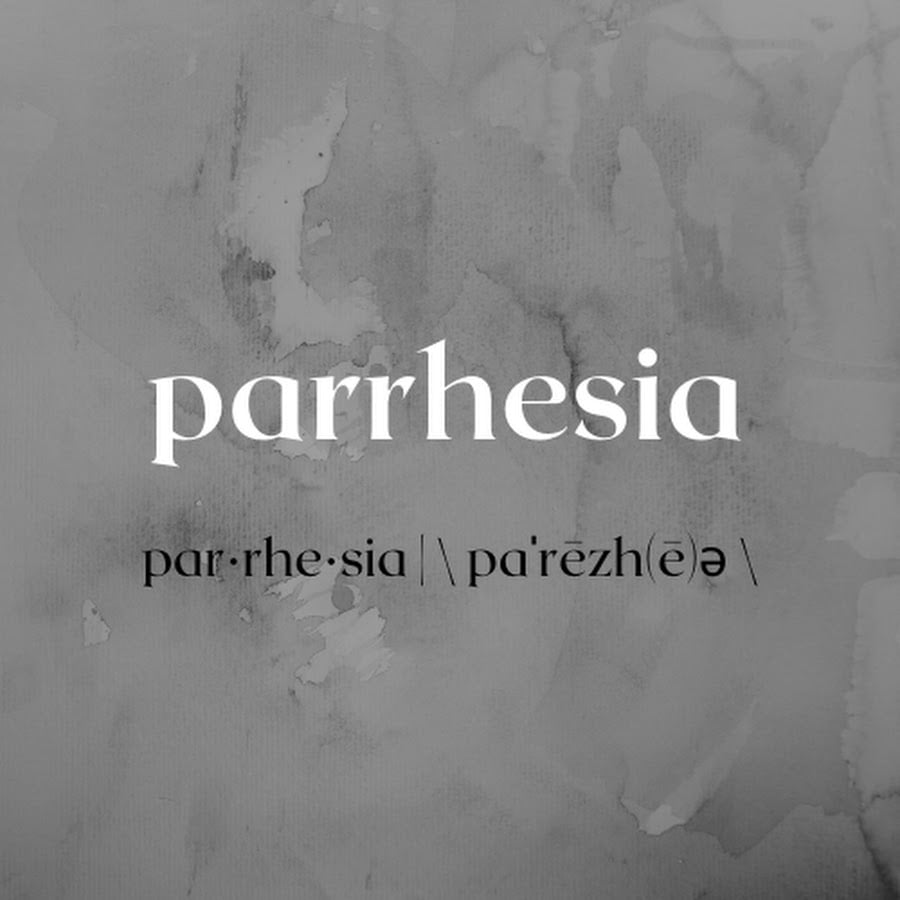In Tribute to Haroutioun Kurkjian
Born and raised in Beirut, I have navigated the complexities of my identity, especially in relation to my Armenian neighborhood, Bourdj Hamoud. In 1968, Kurkjian delved into this existential struggle of the Diaspora Armenian in his pivotal piece, "A Second Equation with Multiple Unknowns." He poses crucial questions about the nature of Armenian identity in the Diaspora.


ARAZ KOJAYAN
Forty days ago, on August 8th, Haroutiun Kurkjian—a prominent intellectual, pedagogue, textbook author, and editor—departed from us far too soon, leaving behind a rich legacy of Armenian studies, historical insights, literary analyses, and book reviews, as well as many questions that he was uniquely poised to answer. My initial impression of Kurkjian came from the textbooks adopted by my Armenian school in Beirut for middle and high school. However, I was fortunate to meet him in person during one of his visits to my hometown, after I expressed my eagerness to connect with him. This meeting sparked a friendship that flourished, primarily through our written correspondence.
A quick internet search might provide information about Kurkjian’s life. Born in 1943 in Beirut, he graduated from Neshan Palandjian Djemaran of Hamazkayin, an institution founded by Nigol Aghpalian and Levon Shant, distinguished figures in Armenian education and politics. Kurkjian continued his studies at the Lebanese French University before earning a Master’s Degree in Philosophy from the Sorbonne in France. He taught Armenian language and literature, French, and philosophy at Djemaran, Haigazian College (now Haigazian University), and the Hamazkayin Armenian Studies Institute. He contributed to literary presses, collaborated with houshamadyan.org, and authored dictionaries and bilingual teaching resources for the Armenian language. His editorial works include a compilation of Armenian Diaspora literature published in Beirut and a study on Ler Gamsar by the Aras publishing house in Istanbul. Collections of his writings are featured in two separate volumes: one published in Paris in 1978 and the other released by Pakin in 2022. To fully grasp an intellectual's impact, one must delve deeply into their ideas. Therefore, I would like to express my reflections on his thoughts in a few sentences.

Born and raised in Beirut, I have navigated the complexities of my identity, especially in relation to my Armenian neighborhood, Bourdj Hamoud. In 1968, Kurkjian delved into this existential struggle of the Diaspora Armenian in his pivotal piece, "A Second Equation with Multiple Unknowns." He poses crucial questions about the nature of Armenian identity in the Diaspora: Is it a fixed entity, an abstract concept, or an evolving existence whose significance changes constantly? How should we approach our Armenianness—should we preserve it or live it? After completing my education at an Armenian school, I began my BA degree in Armenian Studies at Haigazian University, where Marc Nichanian taught us Armenian literature. This period marked a profound shift in my understanding of my Diaspora Armenian identity, significantly influenced by Nichanian's teachings. It was not only my youthful curiosity that prompted me to explore new perspectives but also the new states of consciousness that emerged from Nichanian's readings and his examination of the post-1915 generation of Diaspora writers, particularly the "Menk" and "Paris’i Dghak" generations. Indeed, Kurkjian, a key figure among the three major 20th-century generations (“Mehyan,” “Menk,” “Ahegan”) as described by Nichanian, takes readers on a journey through the streets of Paris in 1968. He then immerses them in the milieu of the "Paris’i Dghak" and ultimately brings them into their own time and space. In discussing assimilation and the myth of preservation, Kurkjian also emphasizes the lack of literature that captures the present moment. This underscores his view of the Diaspora as a vibrant, culture-producing entity.
The above-mentioned article, originally published in “Ahegan”, is featured again in Kurkjian's recent volume. Moreover, “Horizon” newspaper writes in Kurkjian's obituary that, a month before his death, a conference organized by the Calouste Gulbenkian Foundation in Lisbon adopted the title "A New Equation" inspired by the article. In an interview with Pakin on the occasion of his recent publication, Kurkjian characterized his generation as one that challenges the status quo. He candidly criticized the concept of “Safeguarding” of the Armenian Identity, warning that it is perilous in both existential and literary-cultural contexts. "It was a mistake, or at least an exaggeration, to claim that Armenianness is defined solely by past values and traditions," he stated.
In response to an email from a typical Bourdj Hamoudian young person in their early twenties, like myself, written a decade ago, expressing concerns about their first visit to Western Armenia, Kurkjian replied: "I FIND IT NATURAL that the 'verification' of certain Truths could be met with distress. I am referring to truths that are crucial for one's entire life—truths that may not fit into prevailing mentalities and ideologies but are individually discovered, partially touched upon, and more profoundly suggested by the impulse of thought, deserving of faith." He added, "The danger arises when the majority, once shaped, becomes totalitarian and seeks to suppress the self-improvement of individuals."
During my teenage years, Kurkjian was the author of my textbooks and later on, he also became my guiding mentor. Kurkjian generously enlightened my youthful mind with his wisdom. His loss is deeply felt, yet there is solace in the profound richness derived from his work.
May your memory remain ever bright, dear Haroution Kurkjian.
Forty days ago, on August 8th, Haroutiun Kurkjian—a prominent intellectual, pedagogue, textbook author, and editor—departed from us far too soon, leaving behind a rich legacy of Armenian studies, historical insights, literary analyses, and book reviews, as well as many questions that he was uniquely poised to answer. My initial impression of Kurkjian came from the textbooks adopted by my Armenian school in Beirut for middle and high school. However, I was fortunate to meet him in person during one of his visits to my hometown, after I expressed my eagerness to connect with him. This meeting sparked a friendship that flourished, primarily through our written correspondence.
A quick internet search might provide information about Kurkjian’s life. Born in 1943 in Beirut, he graduated from Neshan Palandjian Djemaran of Hamazkayin, an institution founded by Nigol Aghpalian and Levon Shant, distinguished figures in Armenian education and politics. Kurkjian continued his studies at the Lebanese French University before earning a Master’s Degree in Philosophy from the Sorbonne in France. He taught Armenian language and literature, French, and philosophy at Djemaran, Haigazian College (now Haigazian University), and the Hamazkayin Armenian Studies Institute. He contributed to literary presses, collaborated with houshamadyan.org, and authored dictionaries and bilingual teaching resources for the Armenian language. His editorial works include a compilation of Armenian Diaspora literature published in Beirut and a study on Ler Gamsar by the Aras publishing house in Istanbul. Collections of his writings are featured in two separate volumes: one published in Paris in 1978 and the other released by Pakin in 2022. To fully grasp an intellectual's impact, one must delve deeply into their ideas. Therefore, I would like to express my reflections on his thoughts in a few sentences.

Born and raised in Beirut, I have navigated the complexities of my identity, especially in relation to my Armenian neighborhood, Bourdj Hamoud. In 1968, Kurkjian delved into this existential struggle of the Diaspora Armenian in his pivotal piece, "A Second Equation with Multiple Unknowns." He poses crucial questions about the nature of Armenian identity in the Diaspora: Is it a fixed entity, an abstract concept, or an evolving existence whose significance changes constantly? How should we approach our Armenianness—should we preserve it or live it? After completing my education at an Armenian school, I began my BA degree in Armenian Studies at Haigazian University, where Marc Nichanian taught us Armenian literature. This period marked a profound shift in my understanding of my Diaspora Armenian identity, significantly influenced by Nichanian's teachings. It was not only my youthful curiosity that prompted me to explore new perspectives but also the new states of consciousness that emerged from Nichanian's readings and his examination of the post-1915 generation of Diaspora writers, particularly the "Menk" and "Paris’i Dghak" generations. Indeed, Kurkjian, a key figure among the three major 20th-century generations (“Mehyan,” “Menk,” “Ahegan”) as described by Nichanian, takes readers on a journey through the streets of Paris in 1968. He then immerses them in the milieu of the "Paris’i Dghak" and ultimately brings them into their own time and space. In discussing assimilation and the myth of preservation, Kurkjian also emphasizes the lack of literature that captures the present moment. This underscores his view of the Diaspora as a vibrant, culture-producing entity.
The above-mentioned article, originally published in “Ahegan”, is featured again in Kurkjian's recent volume. Moreover, “Horizon” newspaper writes in Kurkjian's obituary that, a month before his death, a conference organized by the Calouste Gulbenkian Foundation in Lisbon adopted the title "A New Equation" inspired by the article. In an interview with Pakin on the occasion of his recent publication, Kurkjian characterized his generation as one that challenges the status quo. He candidly criticized the concept of “Safeguarding” of the Armenian Identity, warning that it is perilous in both existential and literary-cultural contexts. "It was a mistake, or at least an exaggeration, to claim that Armenianness is defined solely by past values and traditions," he stated.
In response to an email from a typical Bourdj Hamoudian young person in their early twenties, like myself, written a decade ago, expressing concerns about their first visit to Western Armenia, Kurkjian replied: "I FIND IT NATURAL that the 'verification' of certain Truths could be met with distress. I am referring to truths that are crucial for one's entire life—truths that may not fit into prevailing mentalities and ideologies but are individually discovered, partially touched upon, and more profoundly suggested by the impulse of thought, deserving of faith." He added, "The danger arises when the majority, once shaped, becomes totalitarian and seeks to suppress the self-improvement of individuals."
During my teenage years, Kurkjian was the author of my textbooks and later on, he also became my guiding mentor. Kurkjian generously enlightened my youthful mind with his wisdom. His loss is deeply felt, yet there is solace in the profound richness derived from his work.
May your memory remain ever bright, dear Haroution Kurkjian.



